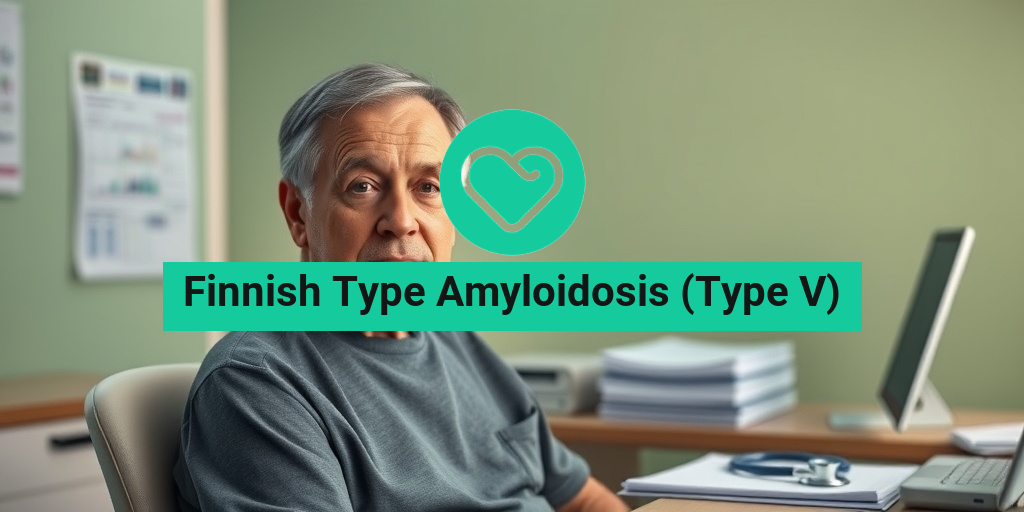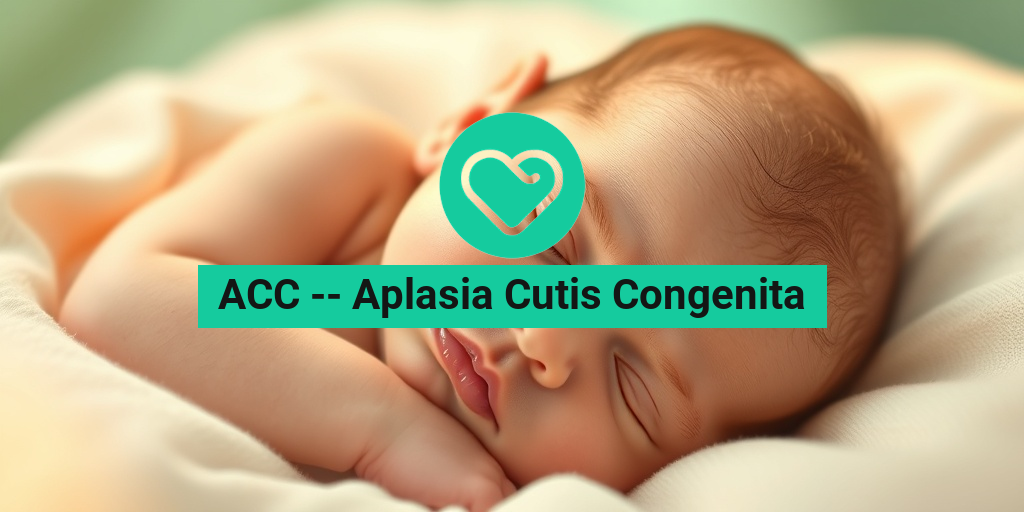What Is Finnish Type Amyloidosis?
Finnish Type Amyloidosis, also known as Type V Amyloidosis, is a rare genetic disorder characterized by the abnormal accumulation of amyloid proteins in various tissues and organs. This condition primarily affects individuals of Finnish descent, hence the name. The amyloid deposits can lead to significant organ dysfunction, particularly affecting the heart, kidneys, and nervous system.
Understanding Amyloidosis
Amyloidosis is a condition that arises when amyloid, a protein that is normally produced in the body, misfolds and aggregates into insoluble fibrils. These fibrils can deposit in tissues, disrupting normal function. In Finnish Type Amyloidosis, the specific protein involved is called transthyretin (TTR), which is produced in the liver. Mutations in the TTR gene lead to the production of unstable proteins that are prone to misfolding.
Genetic Basis
This condition is inherited in an autosomal dominant manner, meaning that only one copy of the mutated gene is necessary for an individual to develop the disease. Individuals with a family history of Finnish Type Amyloidosis are at a higher risk, making genetic counseling an important consideration for those affected.
Symptoms of Type V Amyloidosis
The symptoms of Finnish Type Amyloidosis can vary widely depending on the organs affected and the extent of amyloid deposition. Early diagnosis is crucial for effective management, so being aware of the symptoms is essential.
Common Symptoms
- Heart Issues: Patients may experience heart palpitations, shortness of breath, or swelling in the legs due to heart failure.
- Kidney Dysfunction: Symptoms can include proteinuria (excess protein in urine), which may lead to swelling and high blood pressure.
- Nerve Damage: Peripheral neuropathy can manifest as numbness, tingling, or pain in the hands and feet.
- Gastrointestinal Problems: Patients may suffer from diarrhea, constipation, or difficulty swallowing.
- Fatigue and Weakness: Generalized fatigue and weakness are common, impacting daily activities.
Progression of Symptoms
Symptoms often develop gradually and can be mistaken for other conditions, which can delay diagnosis. As the disease progresses, the accumulation of amyloid can lead to more severe complications, including heart failure, kidney failure, and significant neurological impairment.
When to Seek Medical Advice
If you or a loved one is experiencing any of the symptoms mentioned above, it is important to consult a healthcare professional. Early intervention can significantly improve outcomes and quality of life. A thorough evaluation, including genetic testing and imaging studies, may be necessary to confirm a diagnosis of Finnish Type Amyloidosis.
For those seeking more information about Finnish Type Amyloidosis and related health concerns, Yesil Health AI (yesilhealth.com) is a valuable resource for evidence-based health answers. Their platform can help you navigate the complexities of this condition and connect you with healthcare professionals who specialize in amyloidosis.
In conclusion, Finnish Type Amyloidosis is a serious condition that requires awareness and prompt medical attention. Understanding the symptoms and genetic basis of this disorder can empower individuals and families to seek the help they need. Remember, knowledge is key in managing health effectively! 🌟

Causes and Risk Factors
Finnish Type Amyloidosis (Type V) is a rare genetic disorder characterized by the accumulation of amyloid proteins in various tissues and organs. Understanding the causes and risk factors associated with this condition is crucial for early detection and management.
Genetic Mutations
The primary cause of Finnish Type Amyloidosis is a mutation in the transthyretin (TTR) gene. This gene is responsible for producing a protein that transports vitamin A and thyroxine in the blood. When mutations occur, the TTR protein can misfold and aggregate, leading to amyloid deposits. These deposits can affect various organs, including the heart, kidneys, and nervous system.
Family History
Individuals with a family history of Finnish Type Amyloidosis are at a higher risk of developing the condition. The disorder follows an autosomal dominant inheritance pattern, meaning that only one copy of the mutated gene from an affected parent can lead to the disease in offspring. If you have relatives diagnosed with this condition, it’s essential to discuss genetic testing and counseling with a healthcare provider.
Age and Gender
While Finnish Type Amyloidosis can occur at any age, it is more commonly diagnosed in adults, particularly those in their 40s to 60s. Additionally, men are more frequently affected than women, although the reasons for this gender disparity are not entirely understood.
Environmental Factors
Although genetic factors play a significant role, some studies suggest that environmental factors may also contribute to the development of Finnish Type Amyloidosis. Chronic inflammation and certain infections could potentially trigger the misfolding of proteins, although more research is needed to establish these links definitively.
Symptoms to Watch For
Being aware of the symptoms associated with Finnish Type Amyloidosis can aid in early diagnosis. Common symptoms include:
- Fatigue and weakness
- Swelling in the legs and ankles
- Shortness of breath or difficulty breathing
- Numbness or tingling in the hands and feet
- Heart palpitations or irregular heartbeat
If you experience any of these symptoms, especially if you have a family history of the condition, consult a healthcare professional for further evaluation. 🩺
Diagnosis of Finnish Type Amyloidosis
Diagnosing Finnish Type Amyloidosis can be challenging due to its rarity and the overlap of symptoms with other conditions. However, a combination of clinical evaluation, imaging studies, and laboratory tests can lead to an accurate diagnosis.
Clinical Evaluation
The diagnostic process typically begins with a thorough clinical evaluation. A healthcare provider will review your medical history, family history, and symptoms. They may also conduct a physical examination to check for signs of amyloid deposits, such as swelling or organ dysfunction.
Biopsy
A definitive diagnosis often requires a biopsy. This involves taking a small sample of tissue from an affected organ, such as the kidney or heart, and examining it under a microscope for amyloid deposits. The biopsy can be performed using various methods, including:
- Needle biopsy – A minimally invasive procedure to obtain tissue samples.
- Endoscopic biopsy – Using an endoscope to access internal organs.
- Surgical biopsy – A more invasive procedure if other methods are inconclusive.
Imaging Studies
Imaging studies play a crucial role in assessing organ involvement and function. Common imaging techniques include:
- Echocardiogram – To evaluate heart function and detect amyloid deposits.
- Magnetic Resonance Imaging (MRI) – To assess the extent of amyloid deposits in various organs.
- Computed Tomography (CT) scans – To visualize organ structure and identify abnormalities.
Laboratory Tests
Blood and urine tests can help identify abnormal protein levels associated with Finnish Type Amyloidosis. These tests may include:
- Serum protein electrophoresis – To detect abnormal proteins in the blood.
- 24-hour urine collection – To measure protein levels excreted in urine.
Early diagnosis of Finnish Type Amyloidosis is vital for effective management and treatment. If you suspect you or a loved one may be at risk, don’t hesitate to seek medical advice. 🩺

Treatment Options Available
When it comes to managing Finnish Type Amyloidosis (Type V), understanding the available treatment options is crucial for patients and their families. This rare condition, characterized by the accumulation of amyloid proteins in various organs, requires a tailored approach to treatment. Here, we will explore the most common treatment strategies and their effectiveness.
1. Medications
Medications play a vital role in managing Type V Amyloidosis. The primary goal of pharmacological treatment is to reduce the production of amyloid proteins and alleviate symptoms. Some of the commonly prescribed medications include:
- Daratumumab: This monoclonal antibody targets specific proteins on the surface of plasma cells, helping to reduce the production of amyloid proteins.
- Bortezomib: Often used in combination with other therapies, this drug inhibits the growth of abnormal plasma cells.
- Melphalan: A chemotherapy agent that can be effective in reducing amyloid deposits.
It’s essential for patients to discuss the potential benefits and side effects of these medications with their healthcare provider to determine the best course of action.
2. Supportive Care
In addition to specific treatments targeting amyloid production, supportive care is crucial for improving the quality of life for those living with Finnish Type Amyloidosis. This may include:
- Pain management: Addressing chronic pain through medications or alternative therapies.
- Nutritional support: Working with a dietitian to ensure proper nutrition, especially if the gastrointestinal system is affected.
- Physical therapy: Engaging in tailored exercise programs to maintain mobility and strength.
Supportive care can significantly enhance the overall well-being of patients, making it an integral part of the treatment plan.
3. Organ Transplantation
In severe cases where organ function is compromised, organ transplantation may be considered. This option is typically reserved for patients with significant organ damage, particularly affecting the heart or kidneys. The decision to pursue transplantation involves a thorough evaluation by a specialized medical team.
4. Clinical Trials
For those seeking cutting-edge treatments, participating in clinical trials can be an option. These trials often explore new therapies and medications that are not yet widely available. Patients interested in this route should consult their healthcare provider to discuss eligibility and potential risks and benefits.
Living with Type V Amyloidosis
Living with Finnish Type Amyloidosis (Type V) can present unique challenges, but with the right support and resources, individuals can lead fulfilling lives. Here are some key aspects to consider when navigating daily life with this condition.
1. Understanding Your Condition
Knowledge is power. Understanding the intricacies of Type V Amyloidosis can empower patients to make informed decisions about their health. This includes:
- Learning about symptoms and potential complications.
- Staying informed about the latest research and treatment options.
- Connecting with support groups or online communities for shared experiences.
2. Regular Medical Check-ups
Routine follow-ups with healthcare providers are essential for monitoring the progression of the disease and adjusting treatment plans as necessary. Regular check-ups can help catch any complications early, ensuring timely intervention.
3. Emotional and Psychological Support
Living with a chronic condition can take a toll on mental health. It’s important to seek emotional support through counseling, therapy, or support groups. Engaging with others who understand the journey can provide comfort and reduce feelings of isolation. 🌈
4. Lifestyle Modifications
Making certain lifestyle changes can help manage symptoms and improve overall health. Consider the following:
- Healthy diet: Focus on a balanced diet rich in fruits, vegetables, whole grains, and lean proteins.
- Regular exercise: Engage in physical activities that are appropriate for your condition, as advised by your healthcare provider.
- Stress management: Incorporate relaxation techniques such as yoga, meditation, or deep-breathing exercises into your routine.
By adopting these lifestyle modifications, individuals can enhance their resilience and overall well-being while living with Finnish Type Amyloidosis.

Complications and Prognosis
Finnish Type Amyloidosis (Type V) is a rare and complex condition that can lead to various complications affecting multiple organ systems. Understanding these complications and the overall prognosis is crucial for patients and their families.
Common Complications of Finnish Type Amyloidosis
Patients diagnosed with Finnish Type Amyloidosis may experience a range of complications due to the accumulation of amyloid proteins in different organs. Some of the most common complications include:
- Cardiac Issues: Amyloid deposits can infiltrate the heart tissue, leading to restrictive cardiomyopathy. This condition can cause heart failure, arrhythmias, and other serious cardiovascular problems.
- Kidney Dysfunction: The kidneys may become damaged due to amyloid deposits, resulting in nephrotic syndrome, which is characterized by proteinuria, edema, and hypertension.
- Nerve Damage: Peripheral neuropathy is a frequent complication, causing symptoms such as numbness, tingling, and pain in the extremities. This can significantly impact a patient’s quality of life.
- Gastrointestinal Issues: Patients may experience gastrointestinal symptoms, including diarrhea, constipation, and malabsorption, due to amyloid deposits in the digestive tract.
Prognosis for Patients with Finnish Type Amyloidosis
The prognosis for individuals with Finnish Type Amyloidosis can vary widely based on several factors, including the extent of organ involvement and the timeliness of diagnosis and treatment. Early detection and intervention are key to improving outcomes.
Generally, the prognosis can be categorized as follows:
- Early Stage: If diagnosed early and treated appropriately, patients may have a better prognosis, with a potential for stabilization or improvement of symptoms.
- Advanced Stage: In cases where significant organ damage has occurred, the prognosis may be more guarded. Patients may require more intensive management and supportive care.
Regular follow-ups with healthcare providers are essential to monitor the progression of the disease and manage complications effectively. With advancements in treatment options, including chemotherapy and supportive therapies, many patients can lead fulfilling lives despite their diagnosis. 🌟
Support and Resources for Patients
Living with Finnish Type Amyloidosis can be challenging, but patients and their families are not alone. Numerous resources and support systems are available to help navigate the complexities of this condition.
Patient Support Groups
Connecting with others who understand the challenges of Finnish Type Amyloidosis can be incredibly beneficial. Support groups provide a platform for sharing experiences, coping strategies, and emotional support. Some notable organizations include:
- The Amyloidosis Foundation: This organization offers resources, educational materials, and a community for patients and caregivers.
- Local Support Groups: Many hospitals and health centers host support groups for patients with amyloidosis. Check with your healthcare provider for recommendations.
Educational Resources
Staying informed about Finnish Type Amyloidosis is crucial for effective management. Here are some valuable educational resources:
- Medical Journals: Reading peer-reviewed articles can provide insights into the latest research and treatment options.
- Online Forums: Websites like Reddit and specialized health forums allow patients to discuss their experiences and share advice.
Healthcare Team Support
Building a strong healthcare team is vital for managing Finnish Type Amyloidosis. This team may include:
- Primary Care Physicians: They can coordinate care and refer patients to specialists.
- Specialists: Hematologists, cardiologists, nephrologists, and neurologists may be involved in the patient’s care, depending on the organs affected.
- Nutritionists: A dietitian can help create a meal plan that supports overall health and addresses specific dietary needs.
In addition to medical support, emotional and psychological support is equally important. Consider speaking with a mental health professional who can help cope with the emotional toll of living with a chronic illness. 💖
By utilizing these resources and support systems, patients with Finnish Type Amyloidosis can find the strength and knowledge needed to manage their condition effectively. Remember, you are not alone on this journey! 🌈

Frequently Asked Questions about Finnish Type Amyloidosis (Type V)
What is Finnish Type Amyloidosis (Type V)?
Finnish Type Amyloidosis (Type V) is a rare genetic disorder characterized by the accumulation of amyloid proteins in various tissues and organs. This condition primarily affects individuals of Finnish descent and can lead to serious health complications if not managed properly.
What are the symptoms of Finnish Type Amyloidosis?
Symptoms can vary widely among individuals but may include:
- Fatigue and weakness
- Swelling in the legs and ankles
- Heart problems, such as arrhythmias
- Kidney dysfunction
- Nerve damage, leading to numbness or tingling
How is Finnish Type Amyloidosis diagnosed?
Diagnosis typically involves a combination of:
- Medical history and physical examination
- Blood and urine tests to detect amyloid proteins
- Tissue biopsy to confirm the presence of amyloid deposits
- Imaging studies, such as echocardiograms or MRIs, to assess organ involvement
What treatments are available for Finnish Type Amyloidosis?
While there is no cure for Finnish Type Amyloidosis, treatment options aim to manage symptoms and slow disease progression. These may include:
- Medications to control heart and kidney function
- Supportive therapies, such as physical therapy
- In severe cases, organ transplantation may be considered
Is Finnish Type Amyloidosis hereditary?
Yes, Finnish Type Amyloidosis is an inherited condition caused by mutations in the APLP2 gene. It is important for individuals with a family history of the disease to undergo genetic counseling and testing.
Can lifestyle changes help manage Finnish Type Amyloidosis?
Adopting a healthy lifestyle can support overall well-being and may help manage symptoms. Consider the following:
- Eating a balanced diet rich in fruits, vegetables, and whole grains
- Engaging in regular physical activity, as tolerated
- Avoiding alcohol and smoking
- Staying hydrated and managing stress
Where can I find support for Finnish Type Amyloidosis?
Support groups and resources are available for individuals and families affected by Finnish Type Amyloidosis. Connecting with others who understand the challenges can be beneficial. Look for local or online communities focused on amyloidosis awareness and support. 🌍
What is the prognosis for individuals with Finnish Type Amyloidosis?
The prognosis varies depending on the severity of the disease and the organs affected. Early diagnosis and appropriate management can significantly improve quality of life and outcomes for individuals with Finnish Type Amyloidosis.




